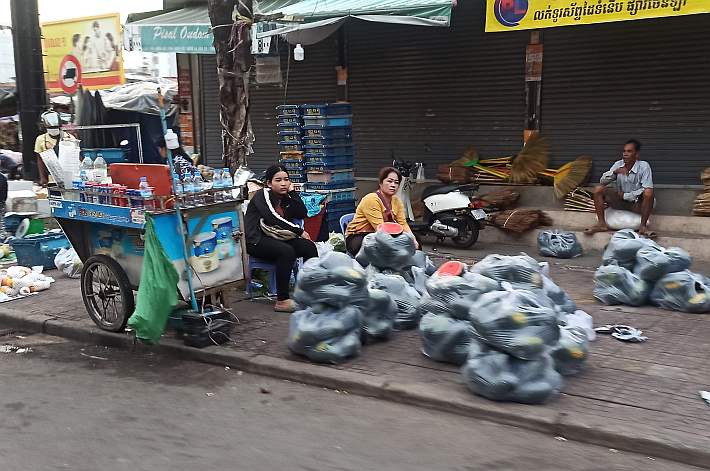
Watermelons

Charlie Dittmeier's Home Page

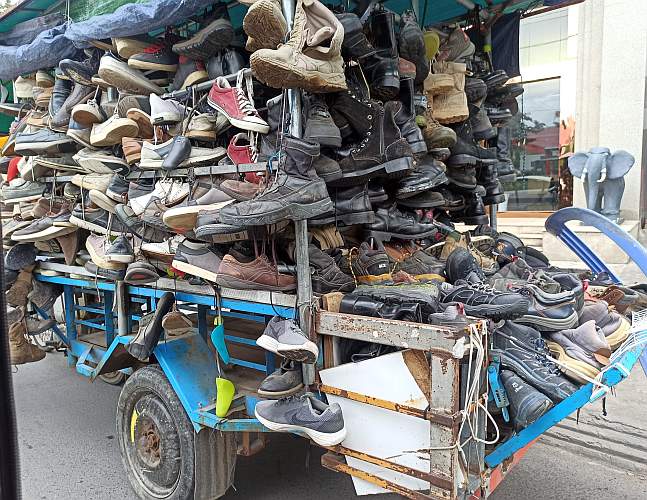
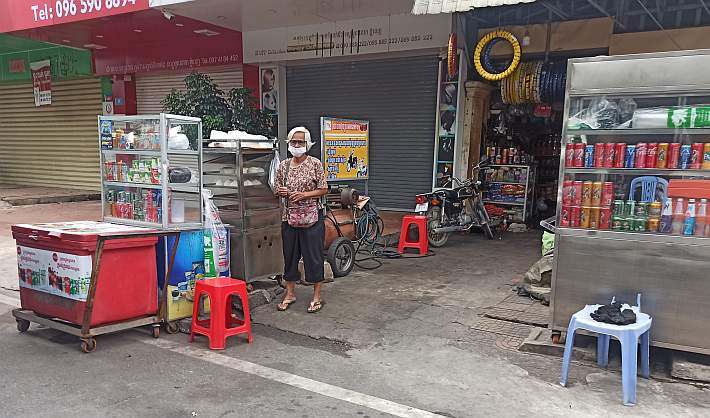
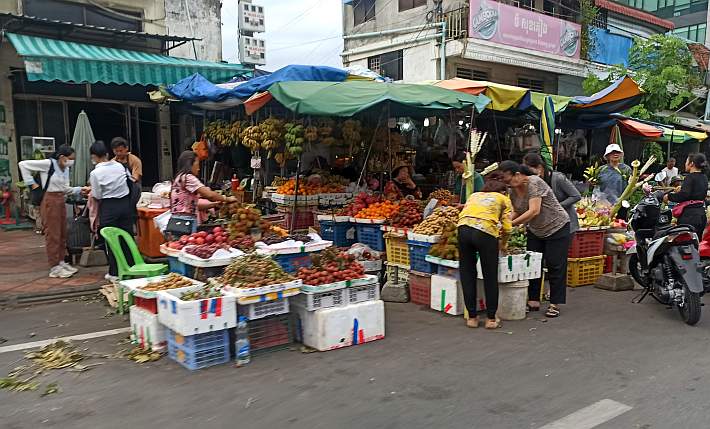
This picture illustrates the chaotic, unregulated way of life in Phnom Penh. This is the street and sidewalk outside of a market in the Tuol Kork neighborhood. The fruit stalls have taken over the sidewalk and one lane of the street. Perfectly acceptable….as long as the police get “tea money” from the fruit stalls.
This morning, after I finished mass with the Missionaries of Charity (Mother Teresa’s sisters), I was looking out the third-floor window at the traffic on Monivong Blvd, and it occurred to me that might be interesting to see. Take a look.
P.S. Well, I see that is not such a good idea. My slow Internet connection shows 2 seconds of video and then buffers for 12 seconds. Not good. I hope your connection is better!

A fruit stall at the Sansam Kosal Market.
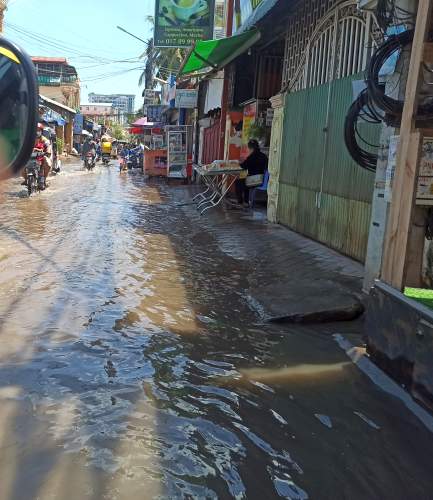
This is water, more than ankle deep, still along a street in Boeung Tum Pun. It collected there in a monster rain storm on MONDAY. Think we have a drainage problem?

The day after the big rainstorm, a woman with a broom in the Boeung Tum Pun area attempts the hopeless task of moving flood water in her street. There’s no place for it to go. The sewer systems weren’t designed for it. Note the concrete drainage pipes lined up to be installed, though. Maybe this time next year there won’t be so much flooding.
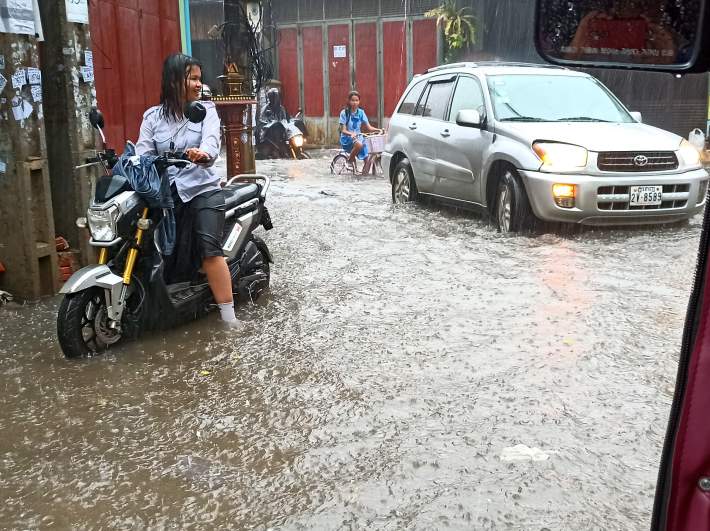
We had a heavy rainstorm this afternoon, right before I was to bicycle home. 20 minutes after it started, it was already over my shoes so I left the bike at the deaf office and took a tuk-tuk home. These two girls got a bit damp on their way home on the streets of the Boeung Tum Pun neighborhood.
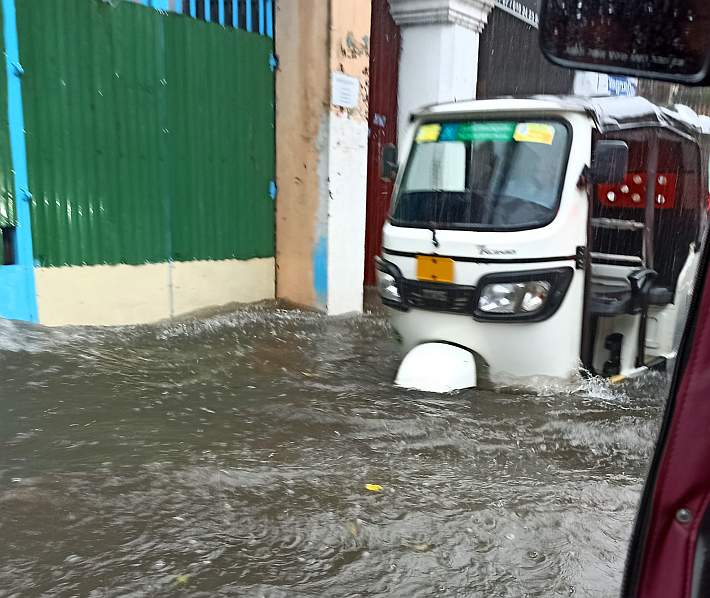
This is the type of tuk-tuk I was in. My shoes were in water when I was sitting IN the tuk-tuk. I have never seen Boeung Tum Pun flood so deep so fast before.
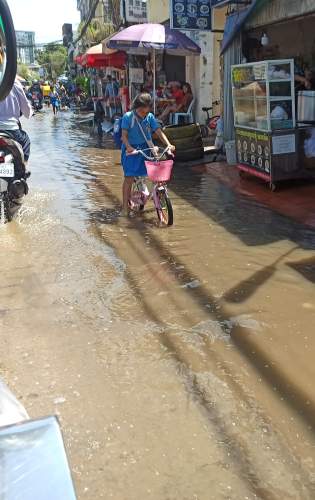
Going home from school can be different here….